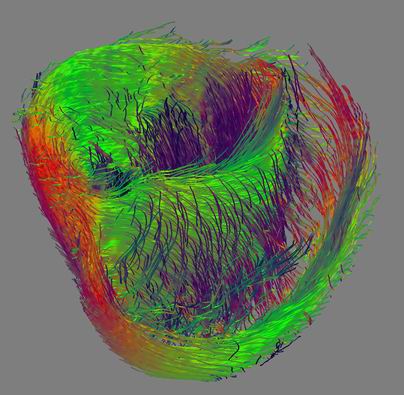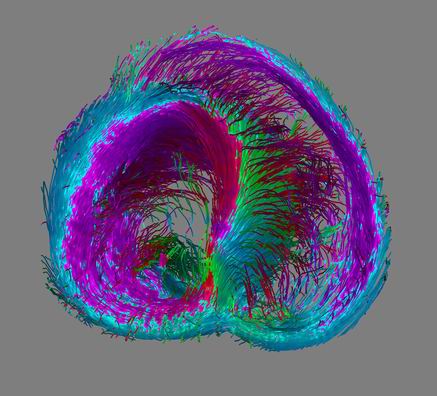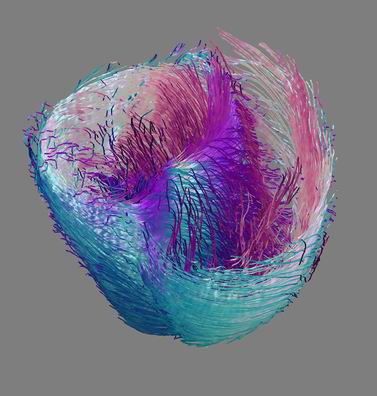 |
 |
 |
 |
| Figure 4: Reconstruction of heart muscle fibers using MLS algorithm. This image uses the RGB-XYZ color scheme. Notice spiraling diagonal orientation of the muscle fibers on the inside and outside surfaces of the heart. | |
 |
 |
 |
 |
| Figure 4: Reconstruction of heart muscle fibers using MLS algorithm. This image uses the RGB-XYZ color scheme. Notice spiraling diagonal orientation of the muscle fibers on the inside and outside surfaces of the heart. | |
 |
 |
| Figure 5: In this figure we use a color scheme which is sensitive to clock/counterclockwise direction of spiraling muscle fibers. Clockwise spiral orientation on the inside surface of the heart (endocardium) shown in purple, and counterclockwise muscle fiber orientation on the outside surface of the heart (epicardium) is shown in blue. This result illustrates the hypothesis that the spiraling fiber orientation in the heart muscle changes from endocardium to epicardium. The fibers are color-mapped independently on how steep the pitch is, causing abrupt change of color on the top. | |
 |
 |
| Figure 6: The color scheme used in this figure changes smoothly from clockwise to counterclockwise spiral oriented fibers. Horizontal parts (very small pitch angle) of the fibers are shown in white. This coloration is consistent with observations of some heart researchers, who have described a systematic smooth variation in pitch and direction of heart muscle fibers from endocardium to epicardium. | |